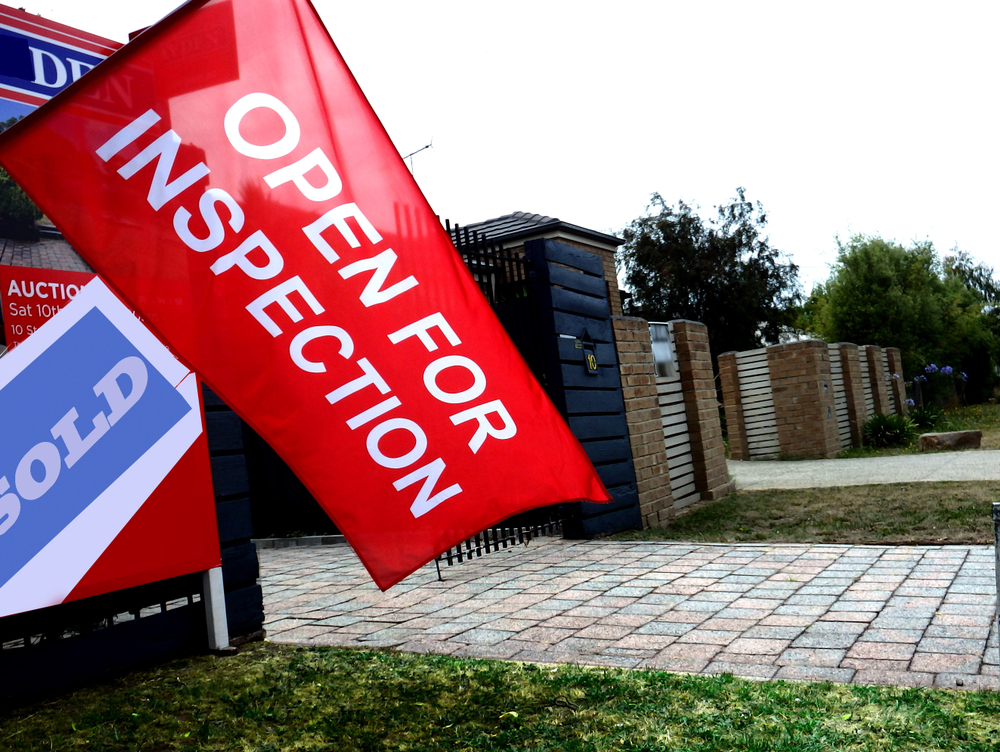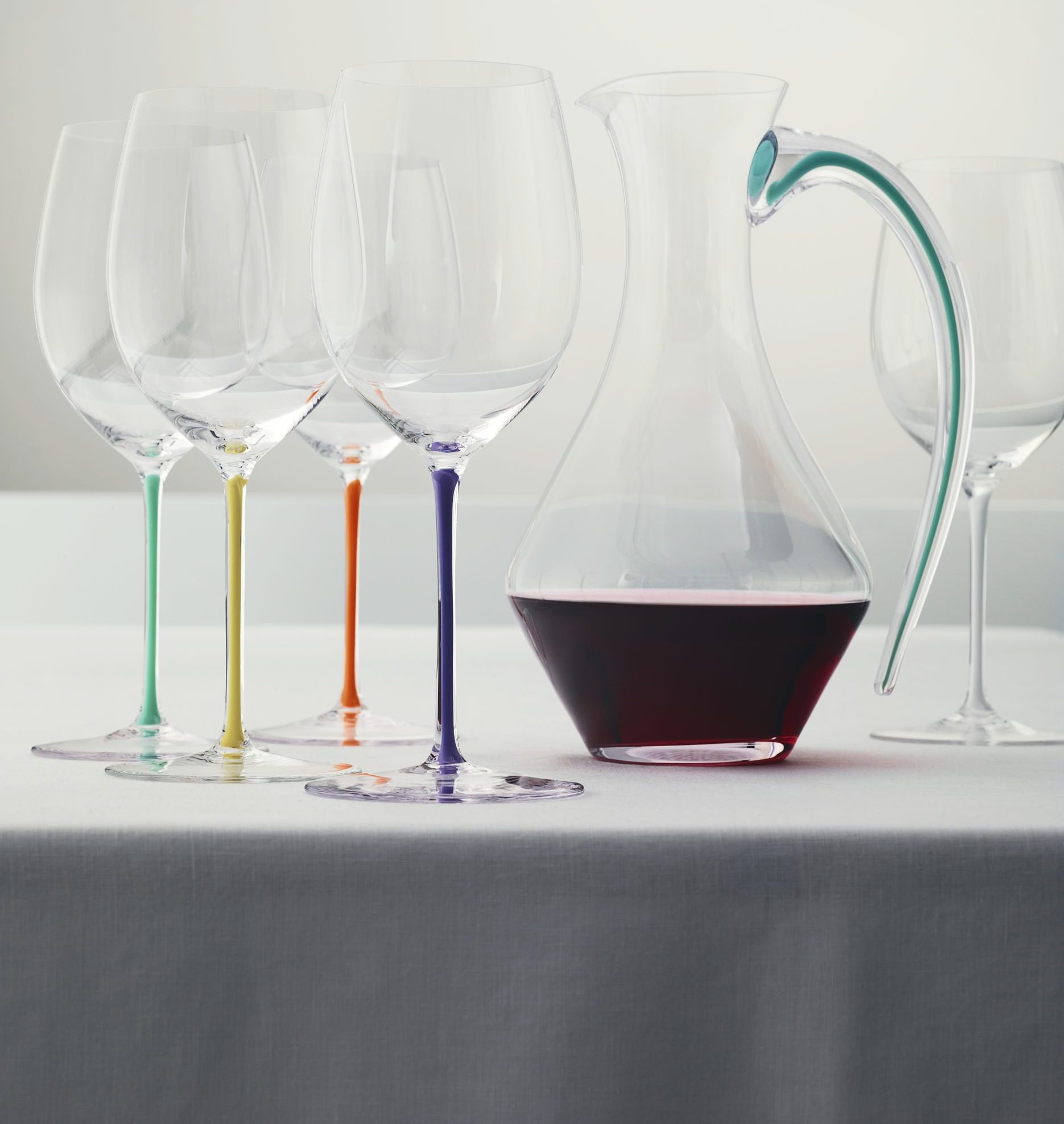A Federation-Era Sydney Home Looked Like a ‘Cold Hospital Ward’ Until an Architect Put It Under the Knife
Amrish Maharaj undid a century of hodgepodge alterations while navigating strict conservation rules
Haberfield, a charming slice of suburbia in what locals call Sydney’s “inner west” region, is miles from the landmarks like the Harbour Bridge and the Opera House, and isn’t famous for multimillion-dollar waterfront mansions. What it is known for, however, is fiercely protecting its architectural identity.
After an uproar in the 1970s led by local residents—who were fed up with period homes getting unsympathetic makeovers—the National Trust created the Haberfield heritage conservation area in the mid-1980s. As a result, the suburb of approximately 6,500 people has one of Sydney’s best-kept streetscapes.The heritage designation has been a win for preserving the past, but has created challenges for architects tasked with making Haberfield’s homes more family-friendly, sustainable and sellable.
Architect Amrish Maharaj was hired by his clients, owners Ramy and Sarah Azzam of ML Constructions, to modernise a single-storey Federation dwelling—an era of Australian architecture between approximately 1890 and 1915. Although its bones dated back to the turn of the last century, the Haberfield home, coined Glencoe, had already undergone a number of objectionable changes before conservation rules had come in. The design was stuck between two time periods.
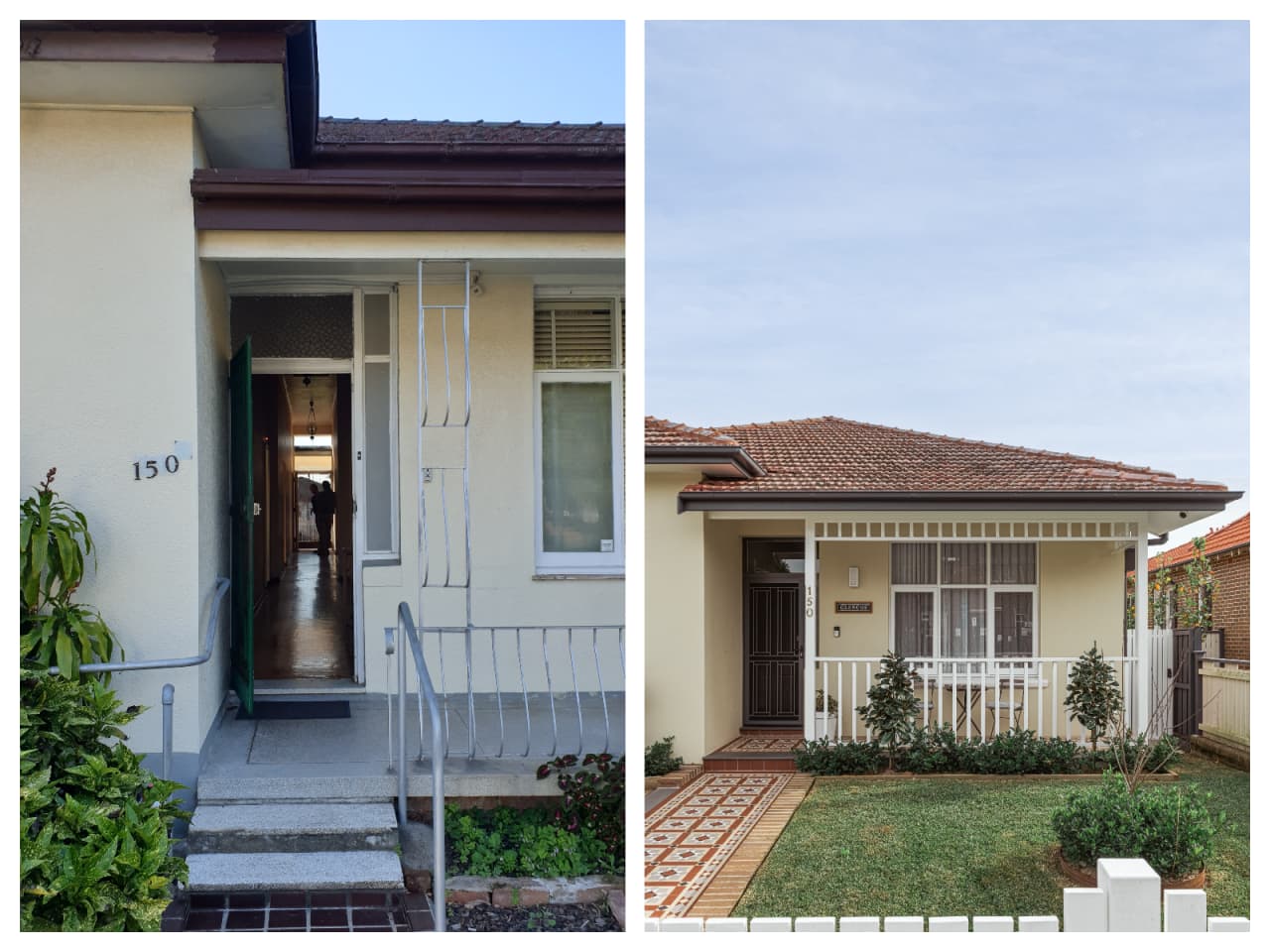
Composite: Vikram Hingmire (After); Amrish Maharaj (Before)
“Its original roof and chimneys had been removed and replaced with a post-1943 hipped roof clad in terracotta tiles. The length of the house had been doubled with the addition of a substantial rear extension. A small skillion roof was put over the front veranda, metal balustrading and the front verandah detailing had also been amended, removing the original timber work,” Maharaj said.
“The previous work appeared to have focused on increasing the number of rooms, and not improving the spaces within,” he added. From the entry, a dark central hallway cut the house in half, splitting four bedrooms and a bathroom to the north from an additional bedroom, an enclosed lounge room, dining room and kitchen to the south.
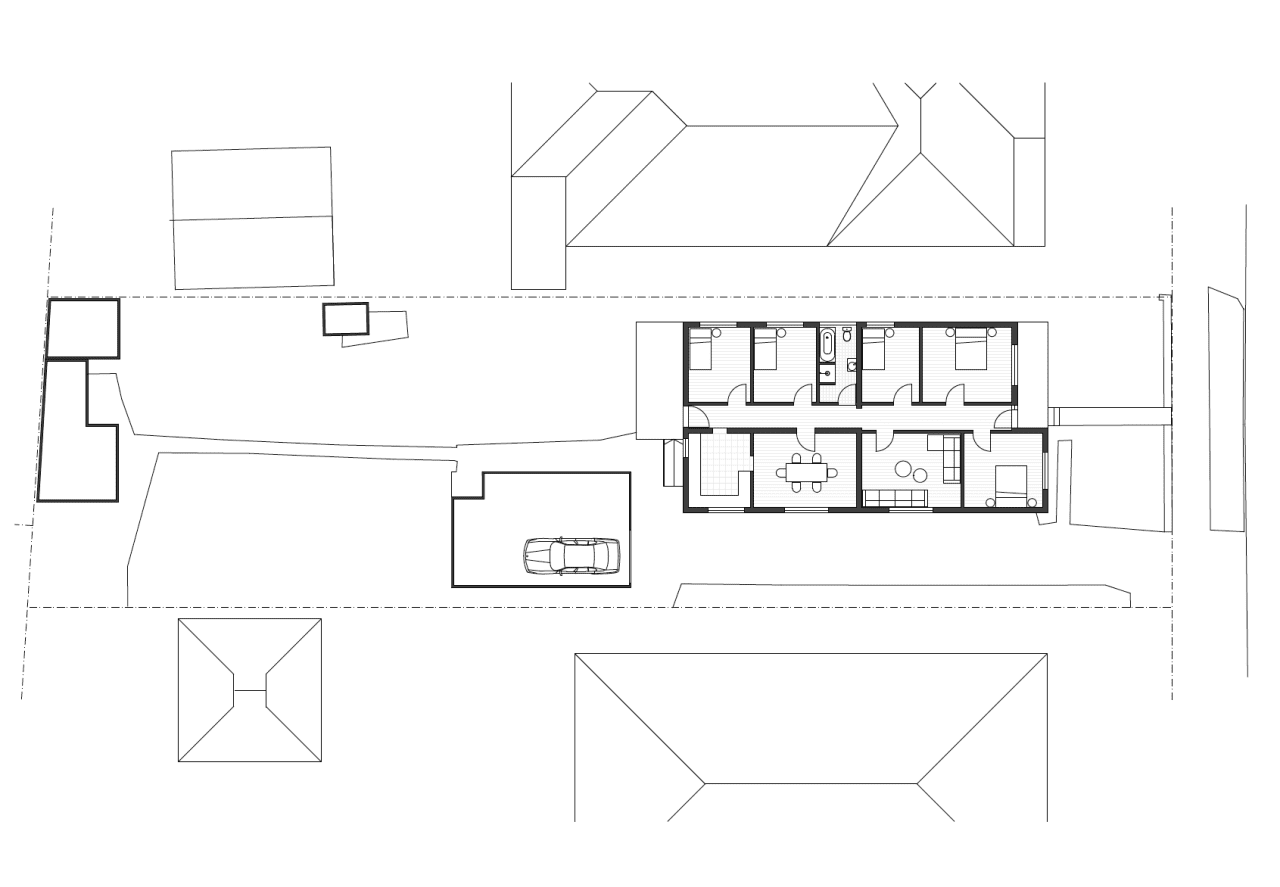
Courtesy of Vikram Hingmire
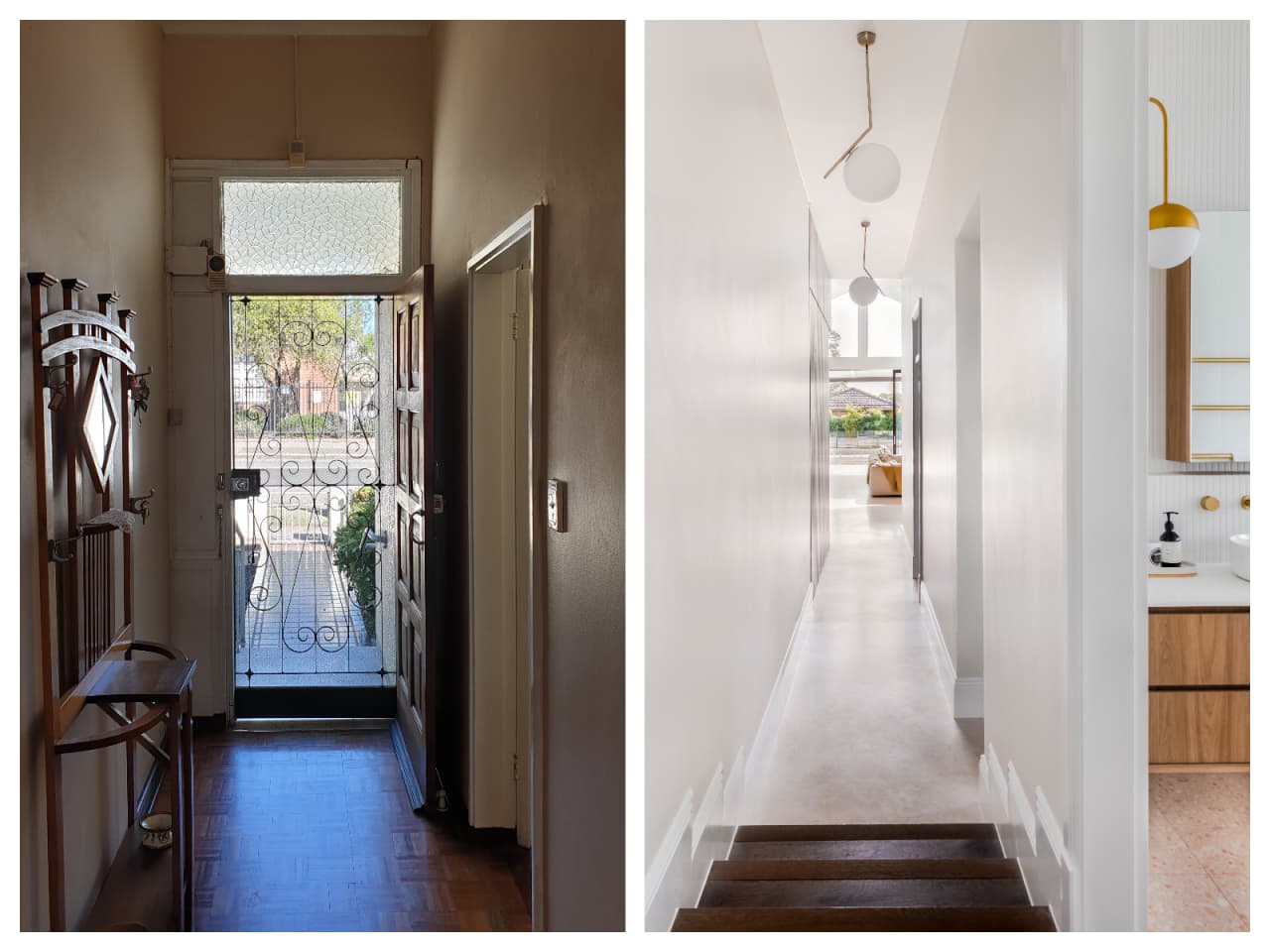
Composite: Vikram Hingmire (After); Amrish Maharaj (Before)
Despite the patchwork of renovations and extensions over the years, planning regulations still remained strict for the team attempting to bring the residence into the 21st century.
“We had an initial concept, which was a little more modern than the end result, but the local council wanted a more traditional construction. We had a heritage expert come and look at the house and give their recommendations,” he said. “She determined that it was probably part of a group of three or four houses that were once the same beautifully detailed Federation-era homes. But somebody had come along in the 1940s and did their own thing.”
“There was a discussion about pulling off the roof and getting it back to what it was, but it came down to a question of budget. We tried to put back as much as we could, by replacing the front windows with traditional timber, we changed the front path and front fence just to give a little nod to what used to be, without stripping the render and reconstructing the whole roof.”
Now the street appeal of the home is a better fit with its Federation neighbours. The decision was then made to pull focus from the facade while investing attention, and funds, into the rear of the house.
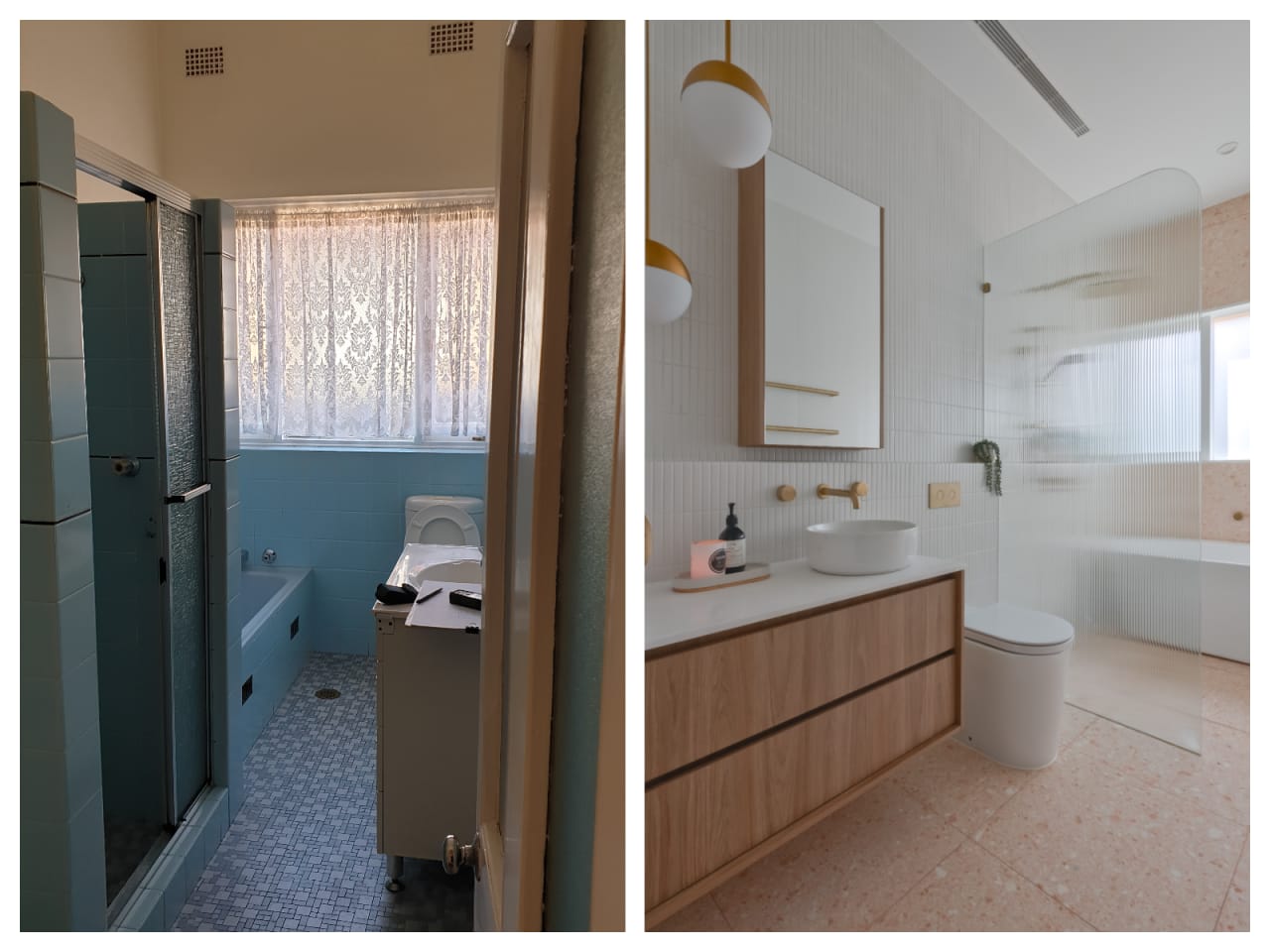
Composite: Vikram Hingmire (After); Amrish Maharaj (Before)
“In keeping with what the Council was wanting, we used traditional materials and techniques in the construction of the back extension even though it does feel very modern,” Maharaj said.
As well as employing conventional methods for the external build of the large rear addition, a host of modern-day luxury finishes were used inside, where the interior design was overseen by owner Sarah Azzam.
High-traffic floors were finished with limestone tiles, Polytec joinery was used throughout, and internal walls feature a sleek white set render. Bathrooms feature Fibonacci Terrazzo tiles with underfloor heating.
A standout of the new look is the grand triangular gable crowning the rear indoor-to-outdoor living zone, a unique design feature in the neighbourhood of smaller sized blocks and heritage homes. The seamless flow to the backyard is an element that has become a must-have in modern Sydney homes thanks to the temperate climate.

Vikram Hingmire
“Our work began with the deconstructing and restructuring of the original home. Retaining four good-sized bedrooms to the front of the house, the central areas were dedicated to service spaces, with a big family bathroom, laundry, powder room and en-suite. The home then steps down to a large open-plan kitchen, dining and living room, which seamlessly connects to an al fresco dining area, garden, and a new pool and cabana,” Maharaj added.
“It’s such a Sydney thing, the seamless flow to the outdoors from the main living area. When I think about our briefs, from every single client, I’d say right at the top of everyone’s list is natural light, good ventilation and a connection to the garden,” he said. “Australians also love a north orientation.”
The Azzams, who declined to comment on the project, bought the unrenovated Haberfield house in 2020 for A$2.5 million (US$1.6 million), then sold the reimagined residence in 2023 for A$4.9 million.
“They bought it as their forever home. That large space at the back was created that way because they’ve got a big extended family,” Maharaj said. “They were often talking about Christmas dinners of 20 to 30 people, and space for a grand dining table was specifically on their list of requirements. Sarah has a great design eye and was meticulously hand selecting the finishes. But they ended up seeing another house nearby and decided to do it all again.”
Maharaj shared some more thoughts about the design and build process.
The biggest surprise was… I think we got lucky with the glass gable in the back of the house. We tried to do something similar on a house only a couple of streets away about a year later and it was completely knocked back by Council. When we pushed back to ask why, we were told it should never have been approved as is. Sometimes the approval process includes a bit of luck.
A favourite material we discovered during the process was… Of all the materials, I’d have to say that the Super White Dolomite and the limestone flooring we used were the big hits. We had quite a few potential buyers asking about these items in particular. We have received a number of calls from other homeowners in the area who are looking for a similar renovation, and even the odd call from people who have seen the home and wanted to express how much they loved it.
The most dramatic change was… When we start these jobs, we can often see that the houses have been either abandoned or people have just added and removed rooms and walls over time. So bringing that all back together was really fulfilling for me as an architect. Originally, this house felt like a cold hospital ward when you walked through it, with all these rooms coming off one corridor. Bringing it back to life and making it feel like a home with a heart is something we’re really proud of.
The total cost of the renovation… Being able to do the building himself, and their own interior design meant the pair could save some money, but they really spared no expense. It was a project that cost approximately A$1.5 million.
 Copyright 2020, Dow Jones & Company, Inc. All Rights Reserved Worldwide. LEARN MORE
Copyright 2020, Dow Jones & Company, Inc. All Rights Reserved Worldwide. LEARN MORE
A divide has opened in the tech job market between those with artificial-intelligence skills and everyone else.
A 30-metre masterpiece unveiled in Monaco brings Lamborghini’s supercar drama to the high seas, powered by 7,600 horsepower and unmistakable Italian design.
Buyer demand, seller confidence and the First Home Guarantee Scheme are setting up a frantic spring, with activity likely to run through Christmas.
The spring property market is shaping up as the most active in recent memory, according to property experts Two Red Shoes.
Mortgage brokers Rebecca Jarrett-Dalton and Brett Sutton point to a potent mix of pent-up buyer demand, robust seller confidence and the First Home Guarantee Scheme as catalysts for a sustained run.
“We’re seeing an unprecedented level of activity, with high auction numbers already a clear indicator of the market’s trajectory,” said Sutton. “Last week, Sydney saw its second-highest number of auctions for the year. This kind of volume, even before the new First Home Guarantee Scheme (FHGS) changes take effect, signals a powerful market run.”
Rebecca Jarrett-Dalton added a note of caution. “While inquiries are at an all-time high, the big question is whether we will have enough stock to meet this demand. The market is incredibly hot, and this could lead to a highly competitive environment for buyers, with many homes selling for hundreds of thousands above their reserve.”
“With listings not keeping pace with buyer demand, buyers are needing to compromise faster and bid harder.”
Two Red Shoes identifies several spring trends. The First Home Guarantee Scheme is expected to unlock a wave of first-time buyers by enabling eligible purchasers to enter with deposits as low as 5 per cent. The firm notes this supports entry and reduces rent leakage, but it is a demand-side fix that risks pushing prices higher around the relevant caps.
Buyer behaviour is shifting toward flexibility. With competition intense, purchasers are prioritising what they can afford over ideal suburb or land size. Two Red Shoes expects the common first-home target price to rise to between $1 and $1.2 million over the next six months.
Affordable corridors are drawing attention. The team highlights Hawkesbury, Claremont Meadows and growth areas such as Austral, with Glenbrook in the Lower Blue Mountains posting standout results. Preliminary Sydney auction clearance rates are holding above 70 per cent despite increased listings, underscoring the depth of demand.
The heat is not without friction. Reports of gazumping have risen, including instances where contract statements were withheld while agents continued to receive offers, reflecting the pressure on buyers in fast-moving campaigns.
Rates are steady, yet some banks are quietly trimming variable and fixed products. Many borrowers are maintaining higher repayments to accelerate principal reduction. “We’re also seeing a strong trend in rent-vesting, where owner-occupiers are investing in a property with the eventual goal of moving into it,” said Jarrett-Dalton.
“This is a smart strategy for safeguarding one’s future in this competitive market, where all signs point to an exceptionally busy and action-packed season.”
Two Red Shoes expects momentum to carry through the holiday period and into the new year, with competition remaining elevated while stock lags demand.
Now complete, Ophora at Tallawong offers luxury finishes, 10-year defect insurance and standout value from $475,000.
A luxury lifestyle might cost more than it used to, but how does it compare with cities around the world?

















